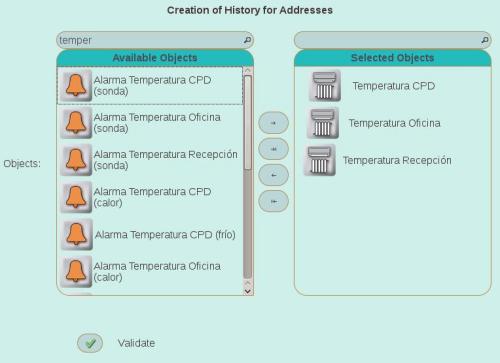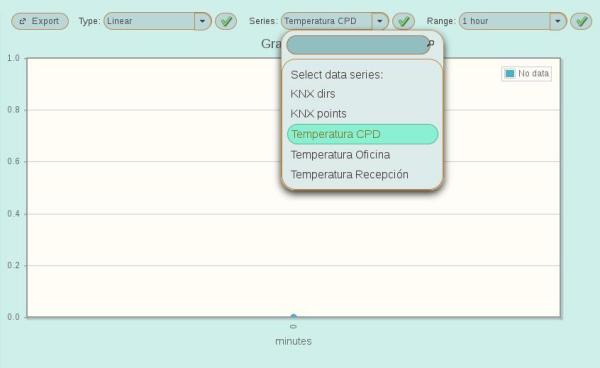Domorela's Blog: Virtual Lab with Domorela DMRL1: Histories configuration
Domorela stores accountable data into objects called Histories and allows to look at these stored values in the Graph View. It's also possible to query Histories through the REST API from an external system that could perform his own graphs and statistical reports. In our Lab, accountable data are temperatures (ºC) and the amount of time the lights are used (hours). First ones are Real values and second ones are Integer values. No other type of data is accountable and can't be stored in a History, nor graphed into or outside of Domorela.
As mentioned before in this Blog, Histories are only configurable by Administrator Level users while Graphs are configurable also by Operation Level users. In an Educational/NFR unit we can only configure 3 histories and 3 graphs, so we will use them to store and graph temperature values of each of the three building parts: CPD, Oficina and Recepción. With a commercial Domorela DMRL1 unit its possible to configure up to 12 Histories and 12 Graphs, so we could also store and graph the use time of all the lighting (7 objects). Anyway, we can read all these values and show them in Domorela WUI or make periodical external queries through the REST API in order to show them in external systems.

Configure new Histories is very simple. In the Configuration View there is a menu with the option to configure Histories. When the corresponding button is pressed, it appears a Selector View allowing to add Group Addresses as new Histories. Despite any existing Group Address are selectable, only those with accountable values will be added as new Histories. Another important thing to take into account is that you can add Histories through this menu, but you can't delete them in the same way and there will be done through CLI commands reserved to administrators with advanced knowledge of Domorela. So, be careful while configuring Histories as they are a limited number of them available and, in the case of any error, you will need to do extra work.

In order to configure Graphs, there is a must that History objects exist previously. Once an administrator has configured History objects then himself, another administrator or an operator can configure Graphs with one or more Series of Data belonging to one or more History objects.

Our next article will talk about Datapoints configuration.